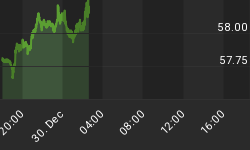Baby Boomers are looking to downsize now, preferably move to a place with more sunshine and a wide variety of breakfast restaurants offering senior citizen discounts. But potential buyers--in this case Millennials--might not have anything to downsize from. Millennials aren't interested in the obnoxiously huge houses of their predecessors, which is why some of those houses are spending up to two years on the market and then selling for half the price.
Millennials number some 80 million in the U.S. alone, and are emerging as the dominant force in the housing market.
However, considering the lack of savings and piling of debt, 75% of millennials likely won't be able to afford a down payment any time soon. There are quite a few reasons for that, includings student debt, delayed marriage, lack of savings, overall affordability or unwillingness to live outside their upscale area of choice.
But, of course, not all Millennials are in these same financial straits. There are quite a few who are able to spend on housing, but they still aren’t opting for the huge nest in the suburbs where they grew up.
Instead, they’re reshaping real estate--and agents will simply have to adapt if they want to stay in the game.
According to a recent report published by WealthEngine, there are 618,000 people between the ages of 24 and 38 who have a net worth of $1 million or more.
By 2030, millennials will hold five times as much wealth as they have today, and they are expected to inherit over $68 trillion from their predecessors (Baby Boomers) in the “Great Transfer of Wealth”.
Related: Oil Plummets As Saudi Arabia, Russia Face Off In Price War
Nearly half of millennial millionaires are concentrated in California, followed by New York, Florida and Massachusetts.
However, even though a $1 million price tag can buy a dream home in quite a few U.S. cities, those areas preferred by rich millennials will get less bang for the buck.
For veteran real estate agents, many younger buyers’ definition of a dream home runs counter to what they understand about luxury real estate. While home value and appeal has long been predicated on square footage, agents say that wealthy millennials have no desire to show off and are unimpressed with large homes.
According to last year’s survey by the National Association of Landscape Professionals, nearly 80% of homebuyers in the United States wanted a spacious and well-maintained lawn, rather than updated kitchens and open floor plans. It used to be that curb appeal was just an added benefit. Now, it’s a necessity.
And part of the reason, according to a study conducted by Harris Poll on behalf of SunTrust Mortgage, is uniquely demographic: Millennials like dogs and there is a trend to focus on pets before getting married and starting a family.
Aside from curb appeal, Millennial homebuyers also have wildly different tastes than previous generations, and size plays a key factor.
They aren’t looking for the obnoxiously large houses over which their predecessors fawned. They aren’t interested in those barren wastelands of “naked” suburban mansions of bathroom-sized bedrooms and multiple entertainment spaces.
Instead, millennials want minimalistic, energy-efficient minimal homes with clean lines and--please--not those ornate trims and columns. And when it comes to energy efficiency, the extra appeal comes with solar panels, rainwater recycling systems, high-end energy-efficient appliances and sustainable building materials.
Proximity to work or public transportation, as well as walkability, are all important considerations.
So, if you’re a Baby Boomer trying to dump your suburban ‘mansion’, it might be better to chop it in half, renovate and just hope for the best--or hope there’s a Gen-X family looking to relocate who still thinks the suburbs are cool, and bigger is better.
By Michael Scott for Safehaven.com
More Top Reads From Safehaven.com:

















